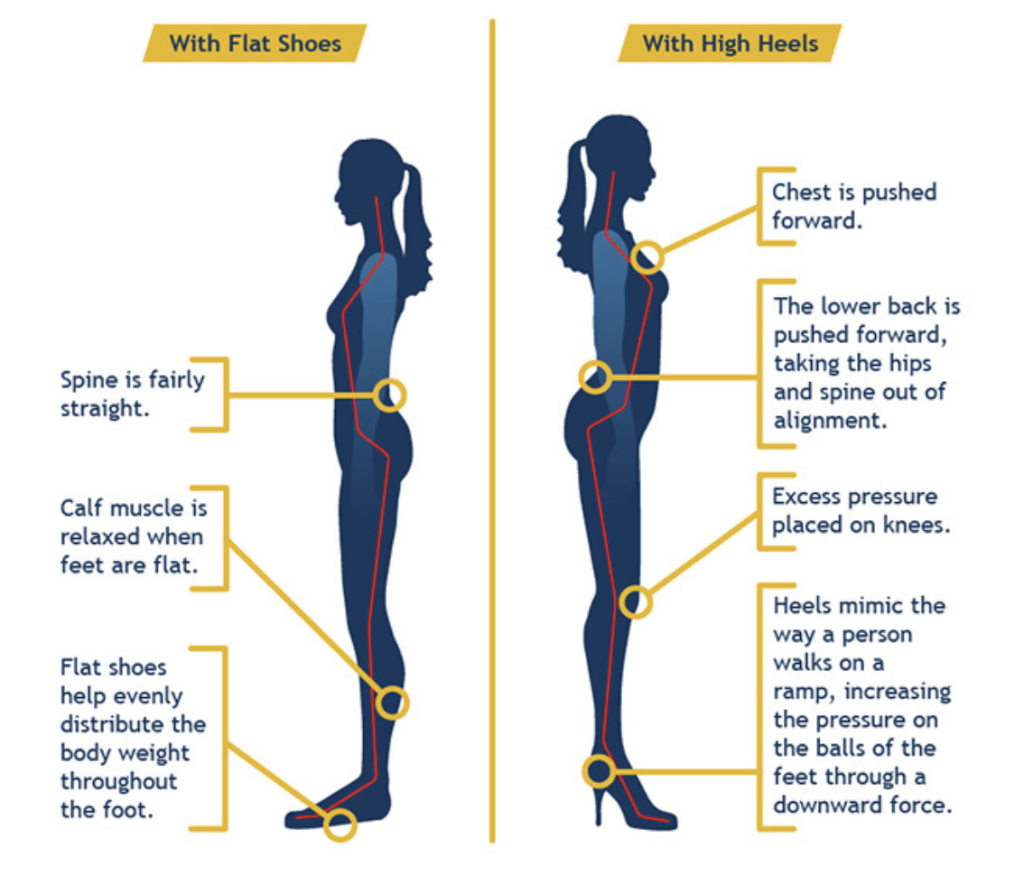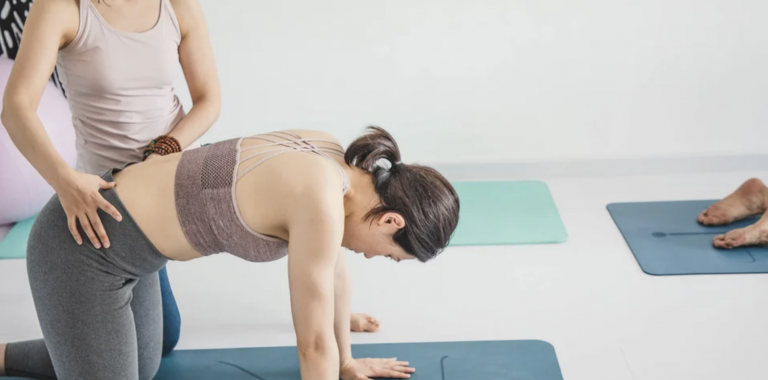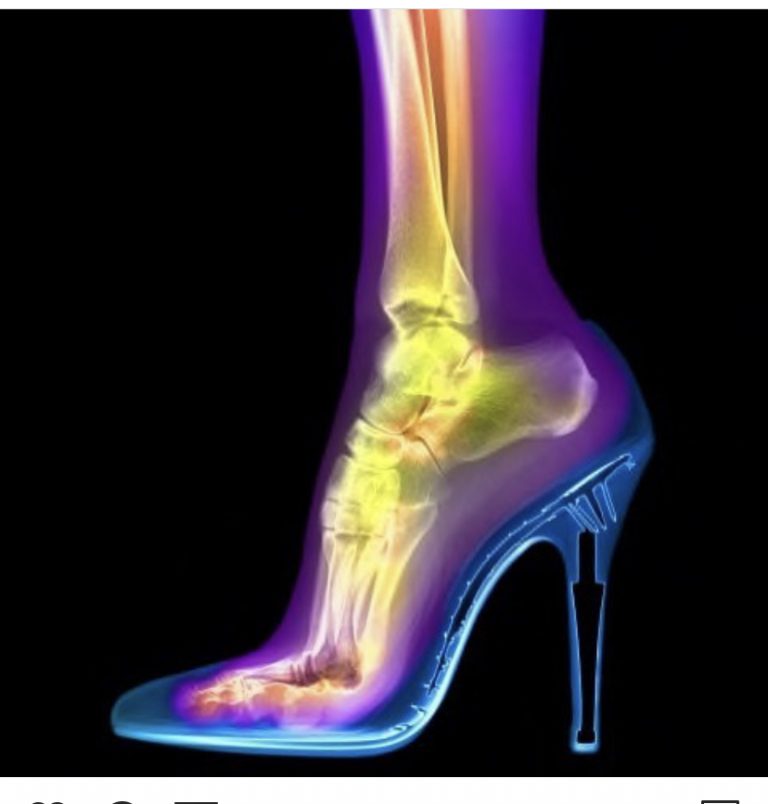Why do we women do this to ourselves? This week, I’ve been working out of the downtown San Diego WeWork and I’ve been watching woman after woman walk by me, wobbling in high stiletto heels. The perfect, pointy pair of 4-inch heels can make any outfit, but with this style comes with so much suffering. Studies have shown that these towering shoes can be costly in more ways than one, taking their toll on your spine, hips, knees, ankles and feet, while altering your posture and gait. Here’s how:
Daily high heel use over a number of years actually leads to changes in your anatomy. The normal S-curve shape of the back acts as a shock absorber, reducing stress on your vertebrae. Wearing high heels causes of the lumbar spine to flatten and causes you to lean forward and decreases the curve of your low back. This causes the weight of your body and your center of gravity to shift forward. As an attempt to compensate, your trunk will flex forward, bending at the hips and spine. Additionally, your calf muscles will shorten and you will lose dorsiflexion range in your foot, leading to increased risk for falls. Consequently, the calf, hips and back become tense and, let’s be honest, no one looks good when stomping the toes and leaning the chest forward in heels that are too high.
The heel’s height determines the weight carried by the footwear. So, as the heel get higher, ongoing pressure increases on the forefoot or the ball of the foot and puts you at risk for painful conditions such as plantar fasciitis and hammer toes. Ouch.

The solution? I’m not saying you can never wear heels; living an extreme lifestyle (in either direction) is unrealistic. Instead, consider a wide variety of shoes, and especially choose those with arch support and heel enclosure. Additionally, yoga can do wonders for your foot/ankle/leg flexibility. Poses like Utkhatasana (chair pose) and any one-legged balance posture can help to strengthen and stretch your feet to counteract your occasional stiletto wearing gait. Maintain flexibility for a supple spine, open hips, and spacious heart. And stay happy, all around.
Happy strutting!
*Photos by radgirlcreations and Spine Health Institute.



